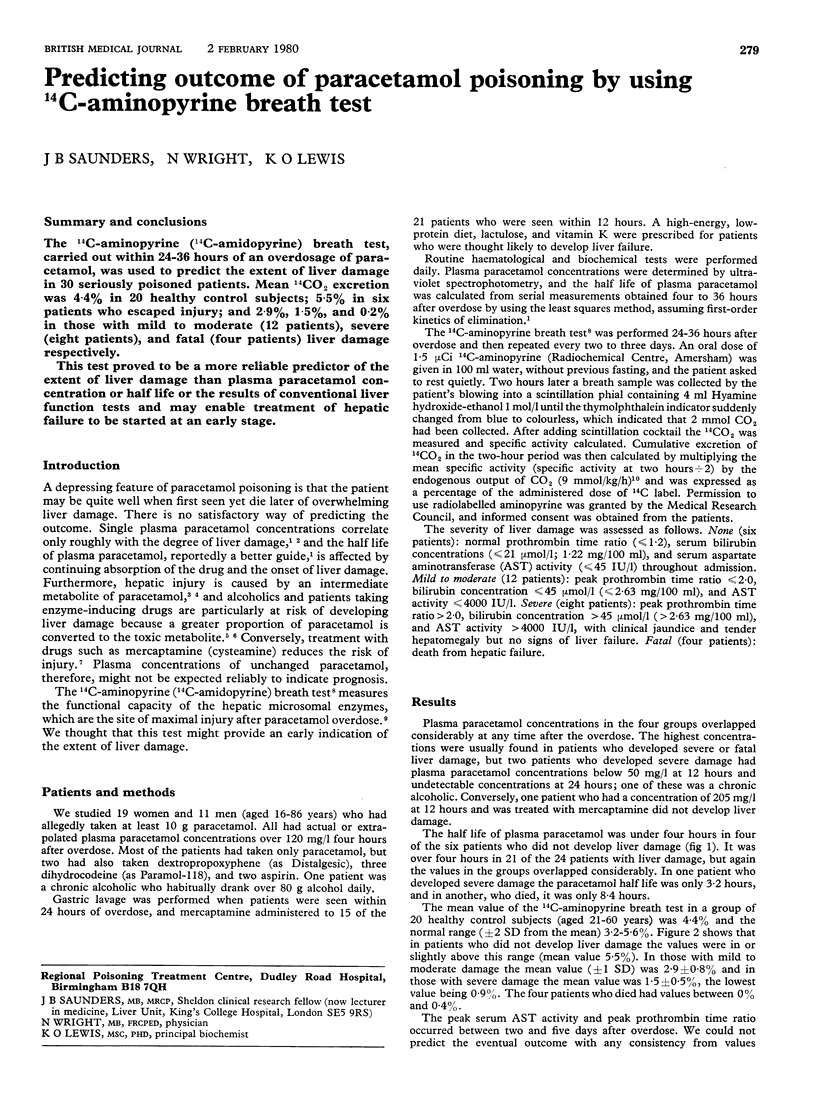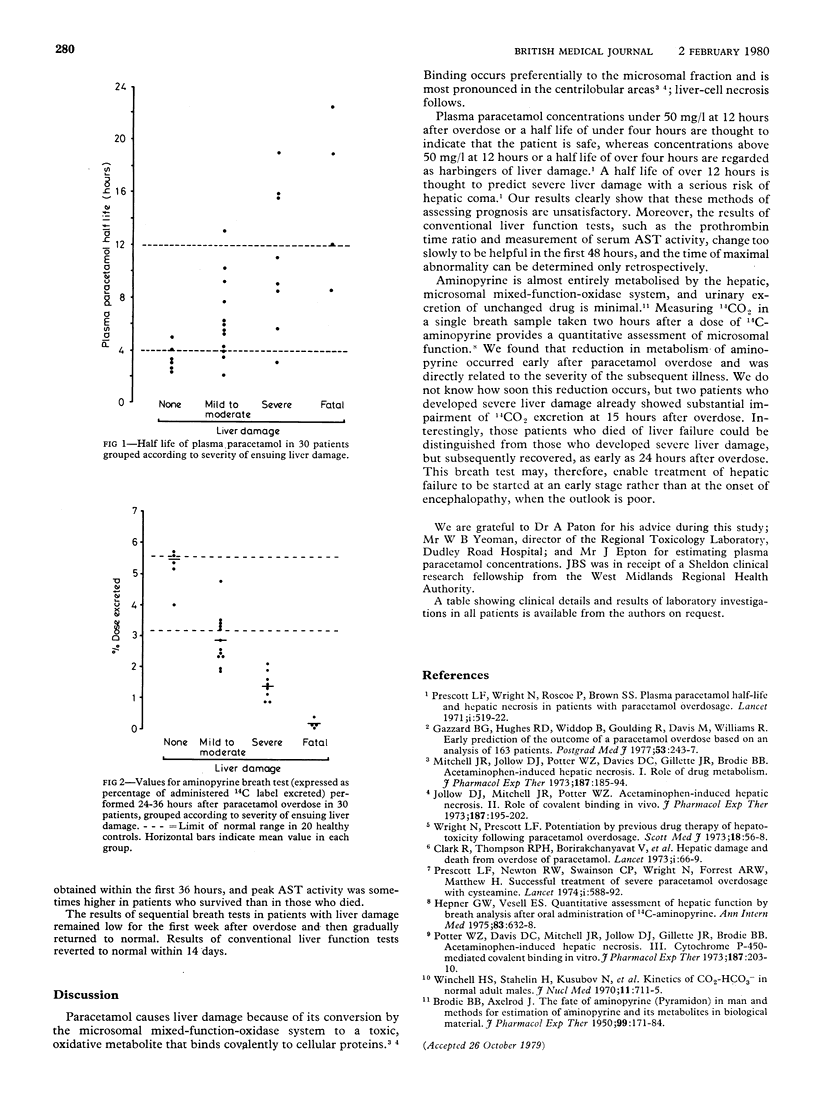Abstract
The 14C-aminopyrine (14C-amidopyrine) breath test, carried out within 24-36 hours of an overdosage of paracetamol, was used to predict the extent of liver damage in 30 seriously poisoned patients. Mean 14CO2 excretion was 4.4% in 20 healthy control subjects; 5.5% in six patients who escaped injury; and 2.9%, 1.5%, and 0.2% in those with mild to moderate (12 patients), severe (eight patients), and fatal (four patients) liver damage respectively. This test proved to be a more reliable predictor of the extent of liver damage than plasma paracetamol concentration or half life or the results of conventional liver function tests and may enable treatment of hepatic failure to be started at an early stage.
Full text
PDF

Selected References
These references are in PubMed. This may not be the complete list of references from this article.
- BRODIE B. B., AXELROD J. The fate of aminopyrine (pyramidon) in man and methods for the estimation of aminopyrine and its metabolites in biological material. J Pharmacol Exp Ther. 1950 Jun;99(2):171–184. [PubMed] [Google Scholar]
- Clark R., Borirakchanyavat V., Davidson A. R., Thompson R. P., Widdop B., Goulding R., Williams R. Hepatic damage and death from overdose of paracetamol. Lancet. 1973 Jan 13;1(7794):66–70. doi: 10.1016/s0140-6736(73)90466-2. [DOI] [PubMed] [Google Scholar]
- Gazzard B. G., Widdop B., Davis M., Hughes R. D., Goulding R., Williams R. Early prediction of the outcome of a paracetamol overdose based on an analysis of 163 patients. Postgrad Med J. 1977 May;53(619):243–247. doi: 10.1136/pgmj.53.619.243. [DOI] [PMC free article] [PubMed] [Google Scholar]
- Hepner G. W., Vesell E. S. Quantitative assessment of hepatic function by breath analysis after oral administration of (14C)aminopyrine. Ann Intern Med. 1975 Nov;83(5):632–638. doi: 10.7326/0003-4819-83-5-632. [DOI] [PubMed] [Google Scholar]
- Jollow D. J., Mitchell J. R., Potter W. Z., Davis D. C., Gillette J. R., Brodie B. B. Acetaminophen-induced hepatic necrosis. II. Role of covalent binding in vivo. J Pharmacol Exp Ther. 1973 Oct;187(1):195–202. [PubMed] [Google Scholar]
- Mitchell J. R., Jollow D. J., Potter W. Z., Davis D. C., Gillette J. R., Brodie B. B. Acetaminophen-induced hepatic necrosis. I. Role of drug metabolism. J Pharmacol Exp Ther. 1973 Oct;187(1):185–194. [PubMed] [Google Scholar]
- Potter W. Z., Davis D. C., Mitchell J. R., Jollow D. J., Gillette J. R., Brodie B. B. Acetaminophen-induced hepatic necrosis. 3. Cytochrome P-450-mediated covalent binding in vitro. J Pharmacol Exp Ther. 1973 Oct;187(1):203–210. [PubMed] [Google Scholar]
- Prescott L. F., Newton R. W., Swainson C. P., Wright N., Forrest A. R., Matthew H. Successful treatment of severe paracetamol overdosage with cysteamine. Lancet. 1974 Apr 6;1(7858):588–592. doi: 10.1016/s0140-6736(74)92649-x. [DOI] [PubMed] [Google Scholar]
- Prescott L. F., Roscoe P., Wright N., Brown S. S. Plasma-paracetamol half-life and hepatic necrosis in patients with paracetamol overdosage. Lancet. 1971 Mar 13;1(7698):519–522. doi: 10.1016/s0140-6736(71)91125-1. [DOI] [PubMed] [Google Scholar]
- Winchell H. S., Stahelin H., Kusubov N., Slanger B., Fish M., Pollycove M., Lawrence J. H. Kinetics of CO2-HCO3 minus in normal adult males. J Nucl Med. 1970 Dec;11(12):711–715. [PubMed] [Google Scholar]
- Wrights N., Prescott L. F. Potentiation by previous drug therapy of hepatotoxicity following paracetamol overdosage. Scott Med J. 1973 Mar;18(2):56–58. doi: 10.1177/003693307301800205. [DOI] [PubMed] [Google Scholar]


